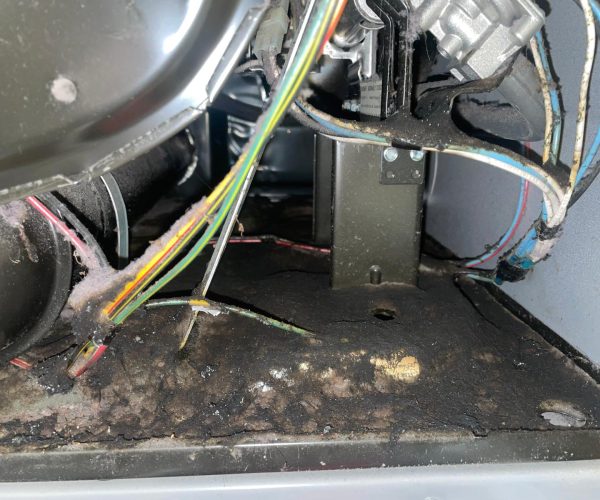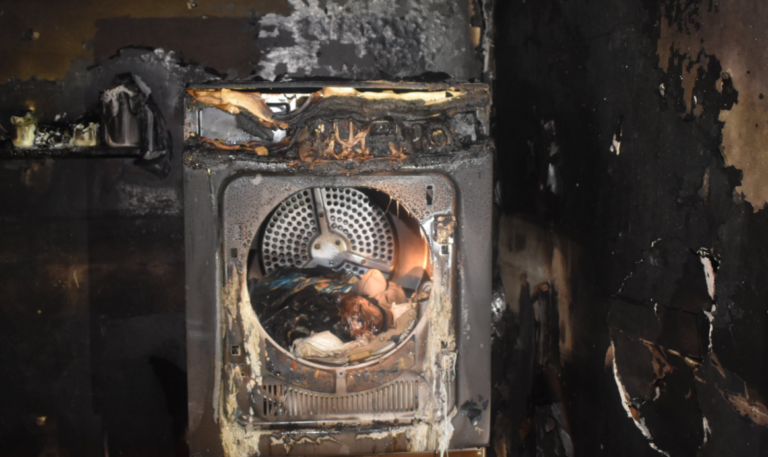Dryer Fires: Causes, Risks, and Prevention Tips

A clothes dryer is an essential appliance in most households, but when not properly maintained, it can pose a serious fire hazard. According to the National Fire Protection Association (NFPA), dryers are responsible for thousands of house fires every year, causing significant property damage and safety risks.
Many of these fires can be traced back to a lack of maintenance, clogged dryer vents, and improper use of the appliance. By understanding the common causes and implementing preventative measures, homeowners can significantly reduce the risk of dryer fires.
Common Causes of Dryer Fires
1. Lint Buildup in the Vent and Exhaust Ducts
The leading cause of dryer fires is the accumulation of lint in the dryer vent system. Lint is highly flammable, and when it builds up in the vent, it restricts airflow, causing the dryer to overheat. This excessive heat can ignite the lint, leading to a fire.
Warning Signs of a Clogged Dryer Vent:
- Clothes take longer to dry than usual
- The dryer feels excessively hot to the touch
- A burning smell is noticeable during operation
- Lint is accumulating around the dryer and outside vent opening
- The vent flap does not open properly when the dryer is running
2. Improper Dryer Vent Installation
Dryer vents that are too long, have sharp bends, or are improperly routed can trap lint and increase fire risks. Some common installation mistakes include:
- Using plastic or flexible foil ducts, which are more prone to lint buildup and fire hazards.
- Vent ducts that do not exhaust outdoors, leading to trapped moisture and potential mold growth.
- Vents that are blocked or crushed, preventing proper airflow.
3. Overloading the Dryer
Stuffing too many clothes or bulky bedding items into the dryer reduces airflow, forcing the appliance to work harder and overheat. This can lead to mechanical failures and increase the likelihood of lint ignition.
Tip: Always follow the recommended load size provided in the manufacturer’s manual.
4. Flammable Materials Inside the Dryer
Certain fabrics and materials should never be placed in a dryer, as they can easily ignite under high heat. Items to avoid drying include:
- Clothes and towels soaked in cooking oils or gasoline
- Plastic, rubber, or foam materials
- Items with flammable residues, such as cleaning rags or chemical-soaked fabrics
5. Electrical Issues & Faulty Components
Electrical failures, such as damaged power cords, loose connections, and faulty heating elements, can cause short circuits and lead to dryer fires. Proper installation and routine inspection of electrical components can help prevent this issue.

How to Prevent Dryer Fires
1. Clean the Lint Filter After Every Use
Before starting a new drying cycle, remove any lint trapped in the filter. A clogged lint screen reduces airflow and increases fire risks.
2. Schedule Regular Dryer Vent Cleaning
Experts recommend cleaning the entire dryer vent system at least once a year. If you use your dryer frequently, consider biannual cleanings. A professional dryer vent cleaning service will:
- Remove lint, dust, and debris from the vent and exhaust system
- Ensure proper airflow and ventilation
- Check for blockages or damage in the venting system
3. Inspect and Maintain the Venting System
- Use a metal duct instead of plastic or foil, as it is more fire-resistant.
- Ensure the dryer vent is properly installed and vents outside the home.
- Check that the vent flap opens and closes freely without obstruction.
4. Avoid Overloading the Dryer
Follow the recommended load size to ensure proper airflow and prevent overheating. Drying small loads separately instead of cramming everything in one cycle can reduce fire risks.
5. Never Leave the Dryer Running Unattended
Avoid running the dryer when you are asleep or away from home. Many dryer fires start when no one is around, allowing flames to spread unnoticed.
6. Install a Smoke Detector Near the Laundry Room
For extra safety, place a smoke detector above the dryer or in the laundry area to detect smoke early and alert you to potential fire hazards.
7. Use the Dryer as Intended
- Check clothing labels to ensure items are dryer-safe.
- Never dry materials containing flammable substances, such as oil-soaked rags or chemical-laden fabrics.
- Do not use the dryer as temporary storage—avoid leaving laundry inside for extended periods.
What to Do If Your Dryer Catches Fire
If you notice smoke or flames coming from your dryer, follow these steps to minimize damage and ensure safety:
- Turn Off the Dryer Immediately – Unplug the appliance or shut off the power supply.
- Evacuate the House – Get everyone out of the home and call 911.
- Do Not Open the Dryer Door – Opening the door may increase oxygen flow and worsen the fire.
- Use a Fire Extinguisher – If the fire is small and manageable, use a Class B or Class C extinguisher.
- Wait for Firefighters – Even if the fire appears to be out, firefighters should inspect the scene to ensure no lingering hot spots.

Final Thoughts: Keep Your Home Safe with Regular Dryer Maintenance
Dryer fires are largely preventable with proper cleaning, routine maintenance, and safe usage practices. By keeping lint buildup under control, ensuring proper ventilation, and following manufacturer guidelines, homeowners can reduce fire risks and keep their appliances operating safely.
At Prime Clean Air, we offer professional dryer vent cleaning services in New York, helping homeowners maintain clean, efficient, and safe dryer systems.
To schedule a dryer vent inspection and cleaning, call 917-655-6075 or book an appointment online today. Protect your home and family from preventable dryer fires with expert care.
Get in touch today
Want to know more about our services or need expert consultation? Just fill out the form below and one of our experienced team members will get back to you promptly.
